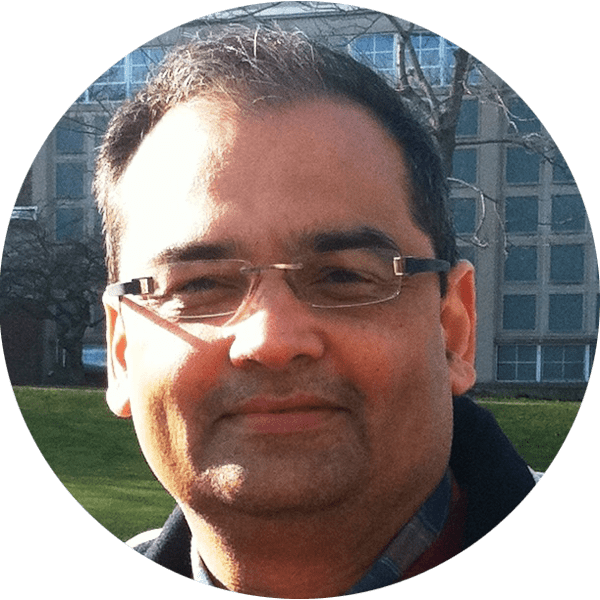06 Jun Exploring Metiabruz – Kolkata’s mini-Lucknow
“the locality, where the last Nawab of Awadh lived and died, adds a fascinating sub-culture to the story of Kolkata”
The unfortunate Wajid Ali Shah was a king without a kingdom. Caught between “two mutually opposed forces, the dying Mughal Empire and the expanding British one”*, he was stripped of his powers as the Nawab of Awadh, forced out of his capital Lucknow, and exiled to Kolkata, where his new masters – the East India Company – could keep an eye on him.
Wajid Ali Shah landed in Kolkata when he was still just 34. He spent the remaining 26 years of his life here and is buried at Metiabruz, a locality that he defined and created, and which till today, is referred to as Kolkata’s mini-Lucknow.
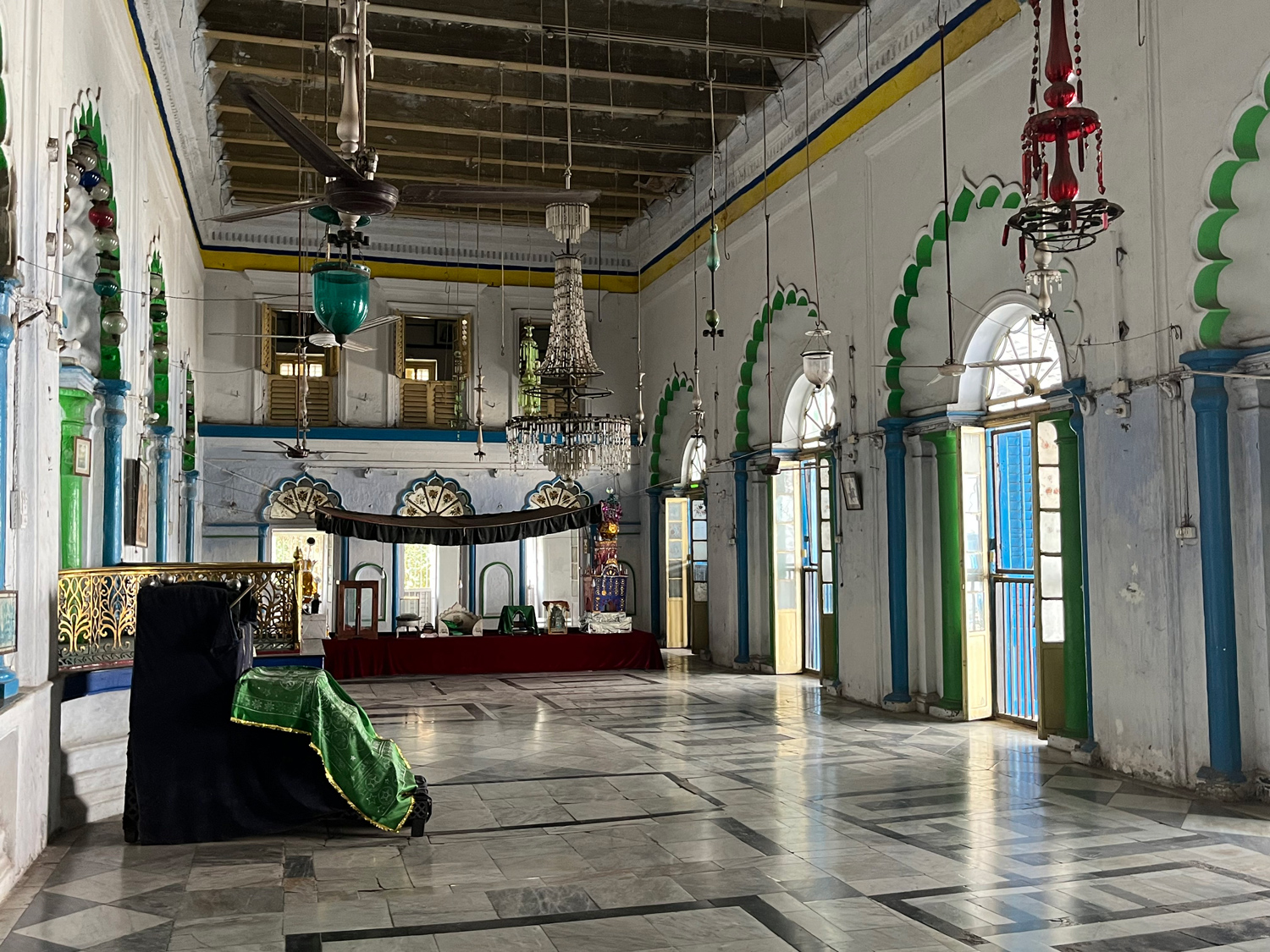 The Shahi Imambara at Metiabruz, where the last king of Awadh lies buried
The Shahi Imambara at Metiabruz, where the last king of Awadh lies buriedTaken by stealth : events in Lucknow and the annexation of Awadh
When Wajid Ali Shah ascended the musnud (throne) of Awadh in 1847, the hey day of his kingdom was firmly in the past.
So, what Wajid Ali Shah inherited was a meaningless kingdom with the Nawabs ”…like plaster statues on their own palaces, presenting a gorgeously rich exterior, but almost hollow within”*
Garden Reach, Metiabruz and the legacy of Wajid Ali Shah
Wajid Ali Shah was left with no choice but to travel to Kolkata to petition the Governor General. If he could not get agreement to having the annexation reversed, he planned to go to London and meet with Queen Victoria. After a two-month boat journey down the Ganges, he landed at Bichali Ghat in Kolkata on May 13, 1856. He would never return.
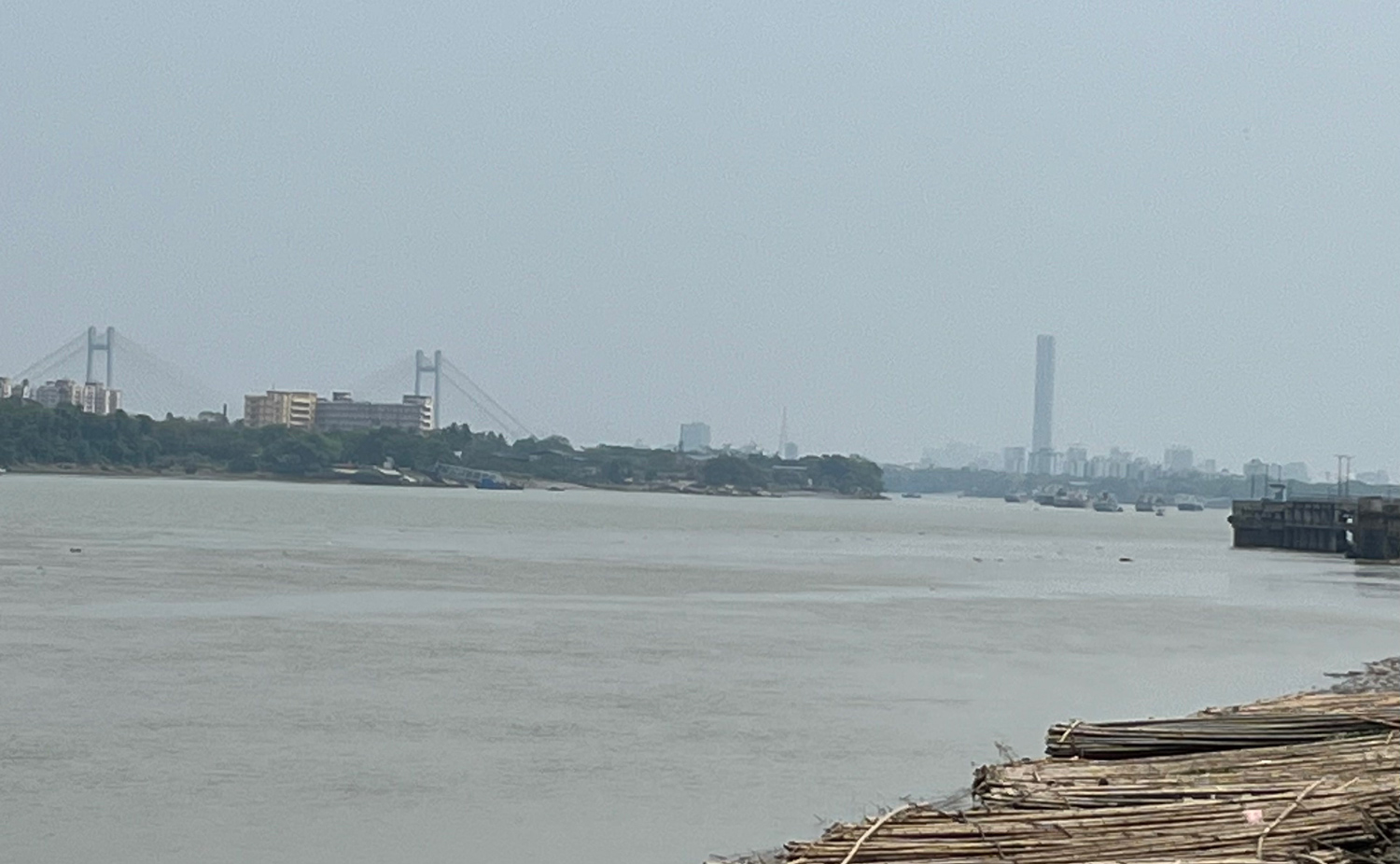
A view from Bichali Ghat today; that is Kolkata upstream – the Vidyasgar Setu bridge and a cluster of high-rises with the towering 42 skyscraper
A walk through the sights and sounds of Metiabruz
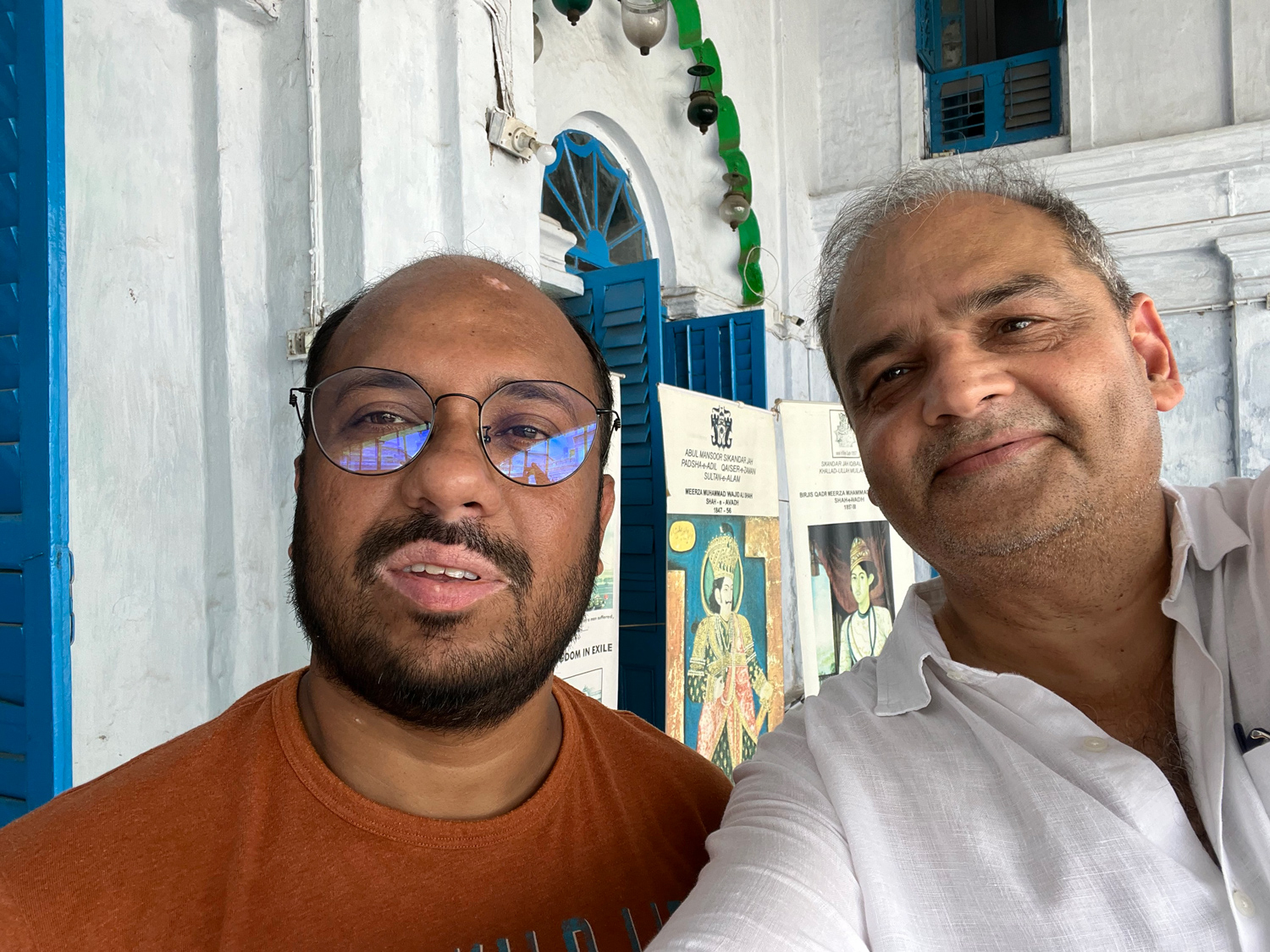 Sohail and me; knowledge transfer in Metiabruz!
Sohail and me; knowledge transfer in Metiabruz!Our first stop was the Qasrul Buka Imambara. This is one of the 5 imambaras and 2 mosques that still exist in Metiabruz from the days of the Nawab. It’s not a surprise that only the religious structures survive, for the bulk of the Nawabs’ properties was auctioned after his death to a variety of bidders.
The Qasrul Buka was built by women members of the Nawab’s family. We entered a small courtyard, surrounded by the home of the khidmatgar’s (caretaker) family. As it was nine in the morning, the doors were still locked and the family fished out the keys to open it for us.
It was the first time I had entered an imambara. We sat on the carpet, where Sohail and I discussed the context. Muslims have two primary sects – the Sunnis and Shias. The Lucknow nawabs were Shias, which explains the presence of Imambaras that are mainly Shia buildings. Imambara literally means the house of the Imam. It is open to both sexes, for people to come for ziarat (pilgrimage). The main assembly hall is used for majlis (a ritual congregation) where those gathered mourn the martyrdom of Hussain and his followers at the Battle of Karbala. The imambara is not a mosque, though at times a mosque may be attached to it – but not to this one.
 The Qasrul Buka Imambar- dignity, and a quiet place for reflection within modest surroundings
The Qasrul Buka Imambar- dignity, and a quiet place for reflection within modest surroundingsWe stood in front of the tazia, which is a miniature imitation – made of bamboo and colored paper – of the Tomb of Imam Hussain. On the tenth day of Muharram, when Imam Hussain is believed to have died at the Battle of Karbala, tazias are taken in a procession through the streets to a lake or river where it is immersed in the water.
A Paan fit for the Nawabs
Stepping back on to the busy main road, we made a pit-stop at a legendary local paan shop which had apparently served paan to the Nawab himself. The original shop was closed due to the death of its proprietor, but in the spirit of local enterprise, the adjoining Panna Lal Chaurasia paan shop was doing great business. A massive photo of the last Nawab adorned the back wall with the message “in memory of Wajid Ali Shah and family in Metiabruz”. I bought my saada paan, and chewed like a Nawab.
Paans are another legacy of Kolkata’s mini-Lucknow. Betel leaf was of huge importance in Lucknow society where it was common for servants to carry a betel box when their masters would go out. This bit of Awadhi culture was transported to Kolkata, as were other aspects like the all-popular biryani, kite-flying and darzis (tailors) to cater to individual clothing tastes. Even today, Metiabruz remains a major producer of kites of different varieties as well as a trading hub for garments.
Having swallowed my paan, we walked towards Iron Gate Road, named after an iron fence that marked the southern boundary of the Nawab’s estate, and the lovely Shahi Masjid, built by Wajid Ali Shah himself.
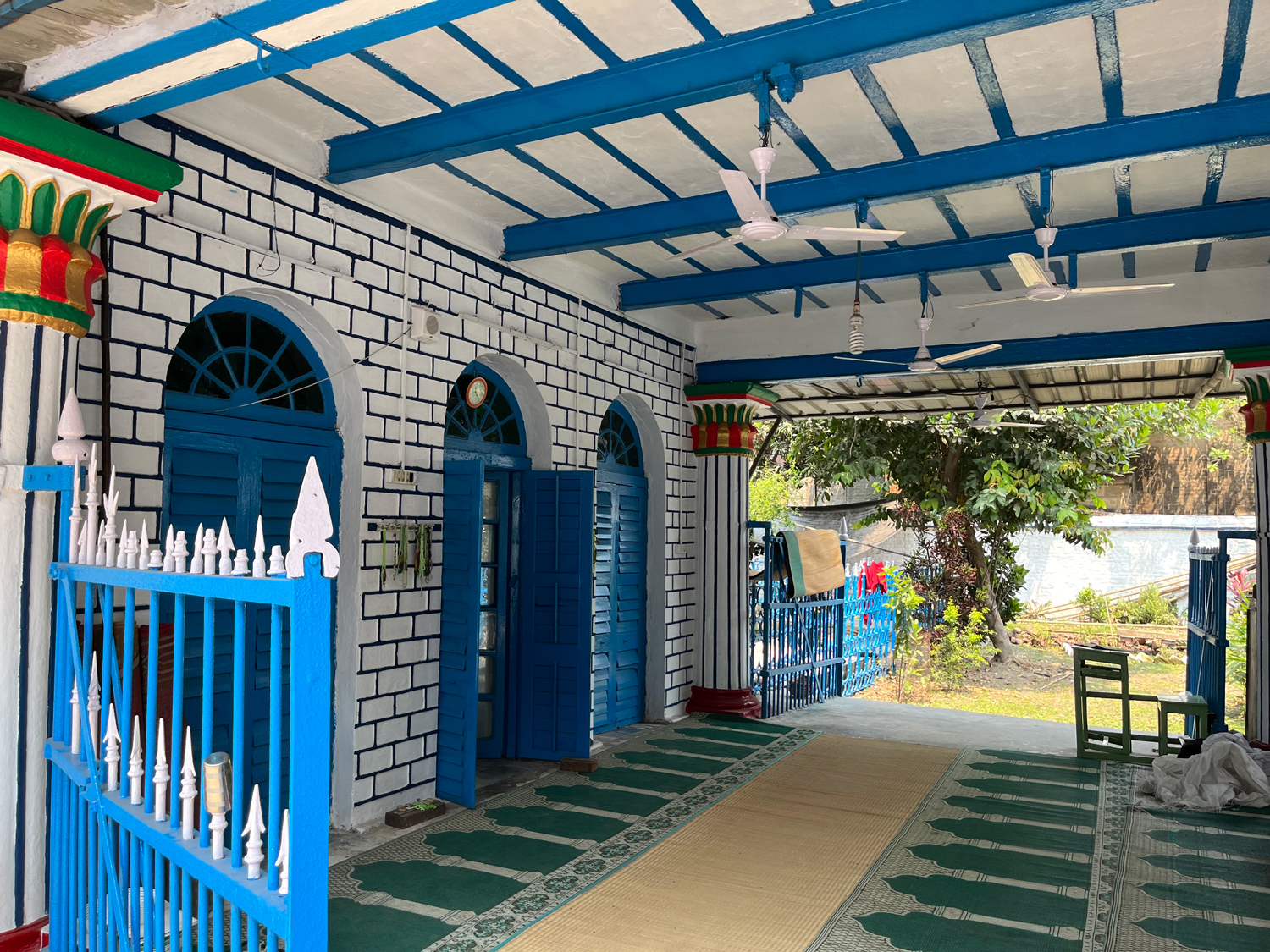 The small and intimate Shahi Masque; the Nawab himself laid the foundation stone
The small and intimate Shahi Masque; the Nawab himself laid the foundation stoneThe name may suggest something grand, but Shahi Masjid is in reality small and intimate, reflecting the paucity of funds at the Nawabs’ disposal. The simplicity of its structure, its quiet “tucked-away” atmosphere – with birds chirping in a small patch of lawn as the sounds of traffic recedes in the background – is what makes it so charming. The mosque was empty apart from a caretaker who showed us around. We walked past a long wuzu pond, used for ablutions, that had fish in it.
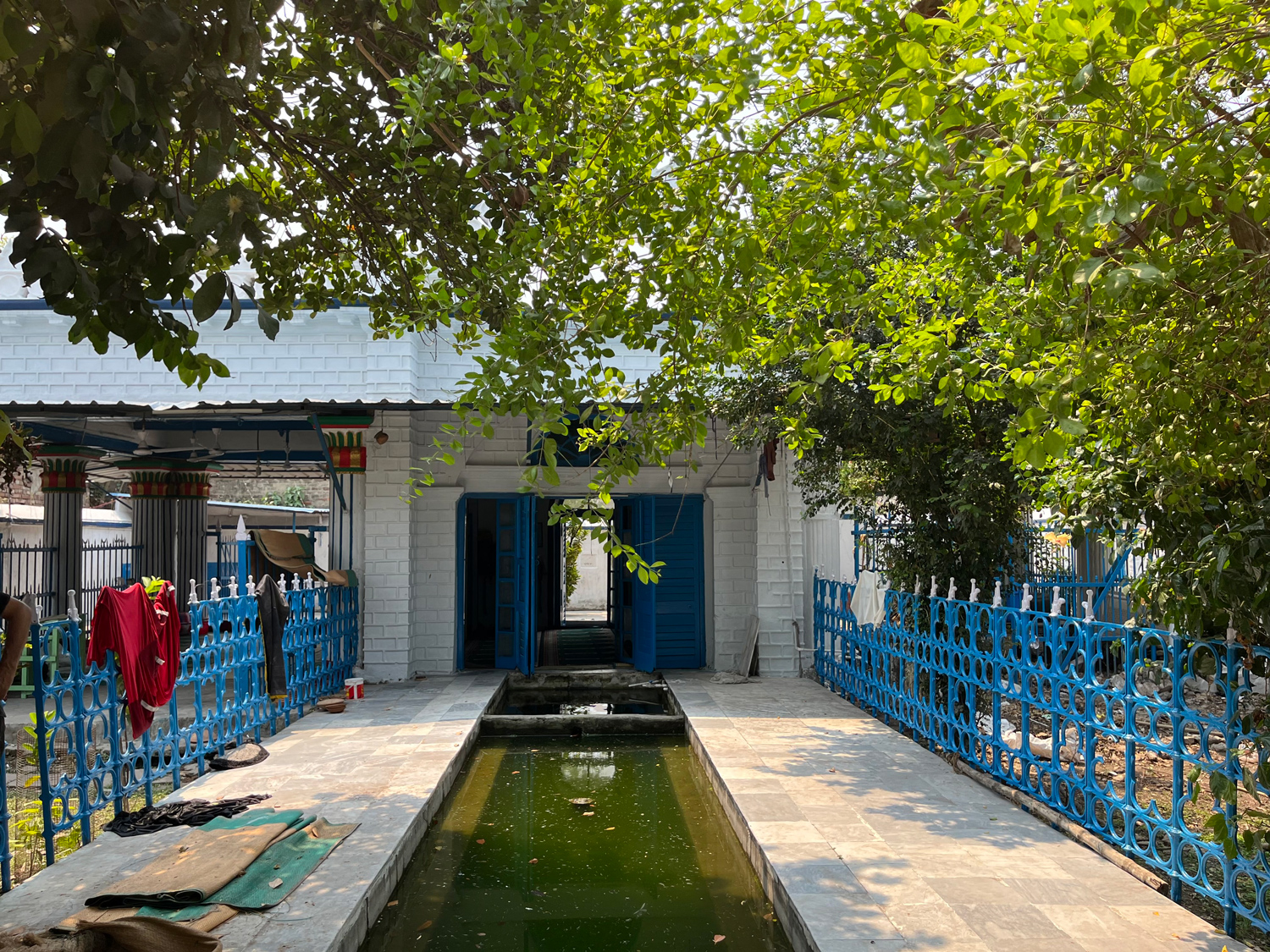 The charming wuzu pond at Shahi Masjid, overhung with greenery
The charming wuzu pond at Shahi Masjid, overhung with greeneryBichali Ghat where the nawab landed, and tales of a tiger that swam across
Leaving behind the calmness of the mosque, we headed towards Bichali ghat, where Wajid Ali Shah first set foot on these shores. Bichali means hay (or bhoosa in hindi), and this ghat is a center for loading bamboo used throughout Bengal for construction and scaffolding.
The scene here was chaotic; with swerving cycle rickshaws, big thelas loaded with bamboo, steamers disgorging a constant stream of passengers. On the opposite shore of the bloated Hooghly, we could see the luxuriant greenery of the Botanical Gardens and further upstream, the Vidyasagar Setu bridge and the tall buildings of Kolkata.
Here Sohail told me about the Nawab’s exotic animals. Wajid Ali’s interest in animals was extraordinary. According to the book by Rosie llwellyn-Jones, his collection included tigers, leopards, spotted deer, all sorts of birds – partridges, ostriches, turkeys, herons, cranes – monkeys from far flung places, a pool filled with fish, even a pair of giraffes, and amazingly, an artificial hill with thousands of snakes. *He had over 800 attendants to look after the animals.
The Shahi Imambara, burial place of the last Nawab of Awadh
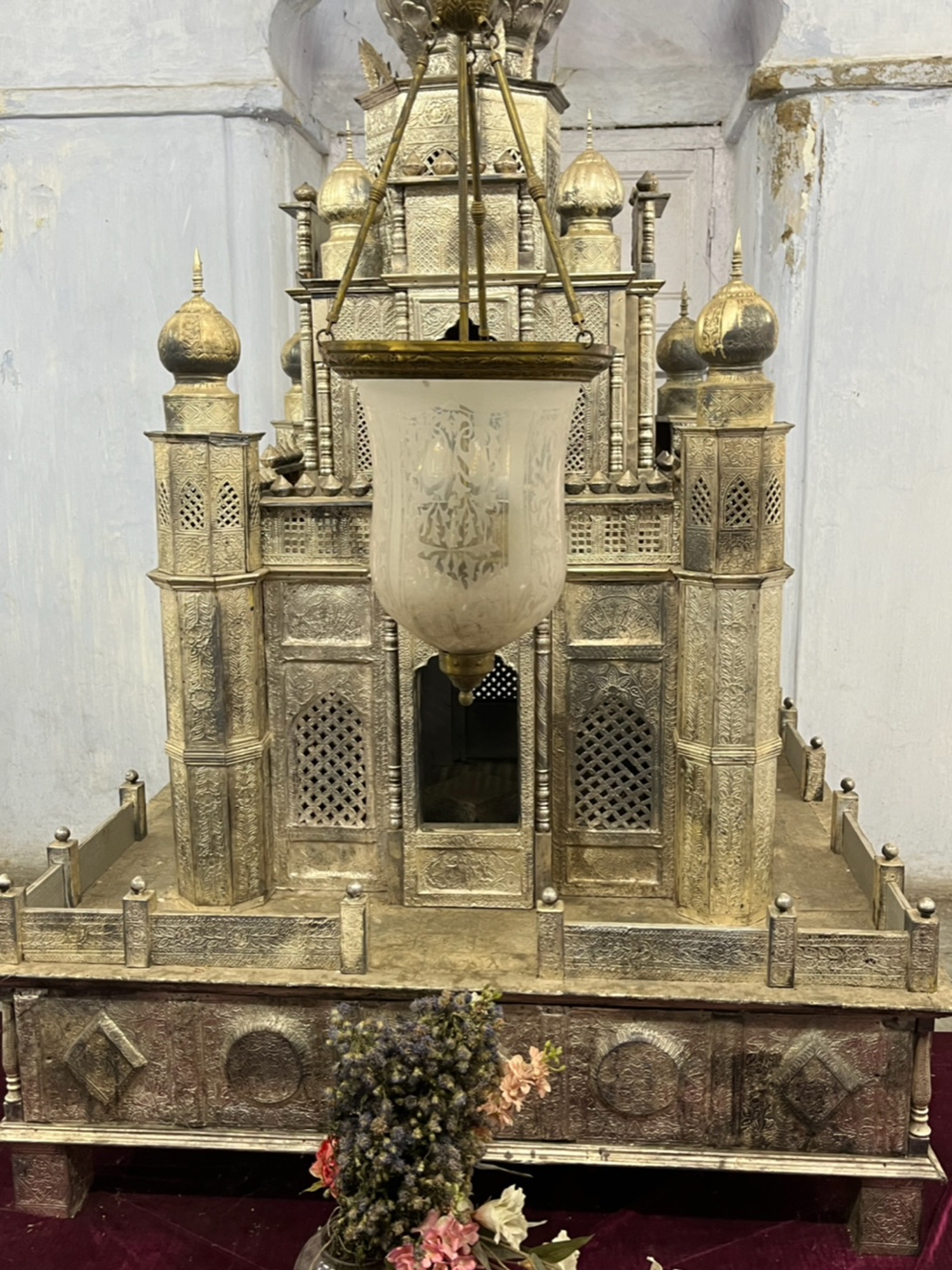 The final resting place of Wajid Ali Shah
The final resting place of Wajid Ali ShahWhen Wajid Ali Shah left Lucknow for Kolkata in 1856, he left behind his queen Hazrat Mahal and his young son Birjis Qudr. The feisty Hazrat Mahal went on to live an extraordinary life, valiantly fighting the British during the revolt of 1857, determined to keep her independence and the rights of her son. She was forced to retreat to Nepal where she was given asylum by the Nepalese king. Hazrat Mahal eventually died in Kathmandu and is buried there, while her son Birjis Qudr returned to India in 1887 only to be allegedly poisoned to death by jealous relatives.
Last stop, the most beautiful of all
Sharing a boundary wall with the Shahi Imambara is the beautiful Umdah Imambara, our last stop.
Umdah means excellent in Urdu, and the name does this place justice. It was built by one of the Nawab’s mutah wives, which is a now-frowned upon custom where a “temporary” marriage is arranged for a specific period, often with a payment consideration. The Nawab had several mutah wives, a convenient way to side-step a full nikah marriage, which came with its own obligations.
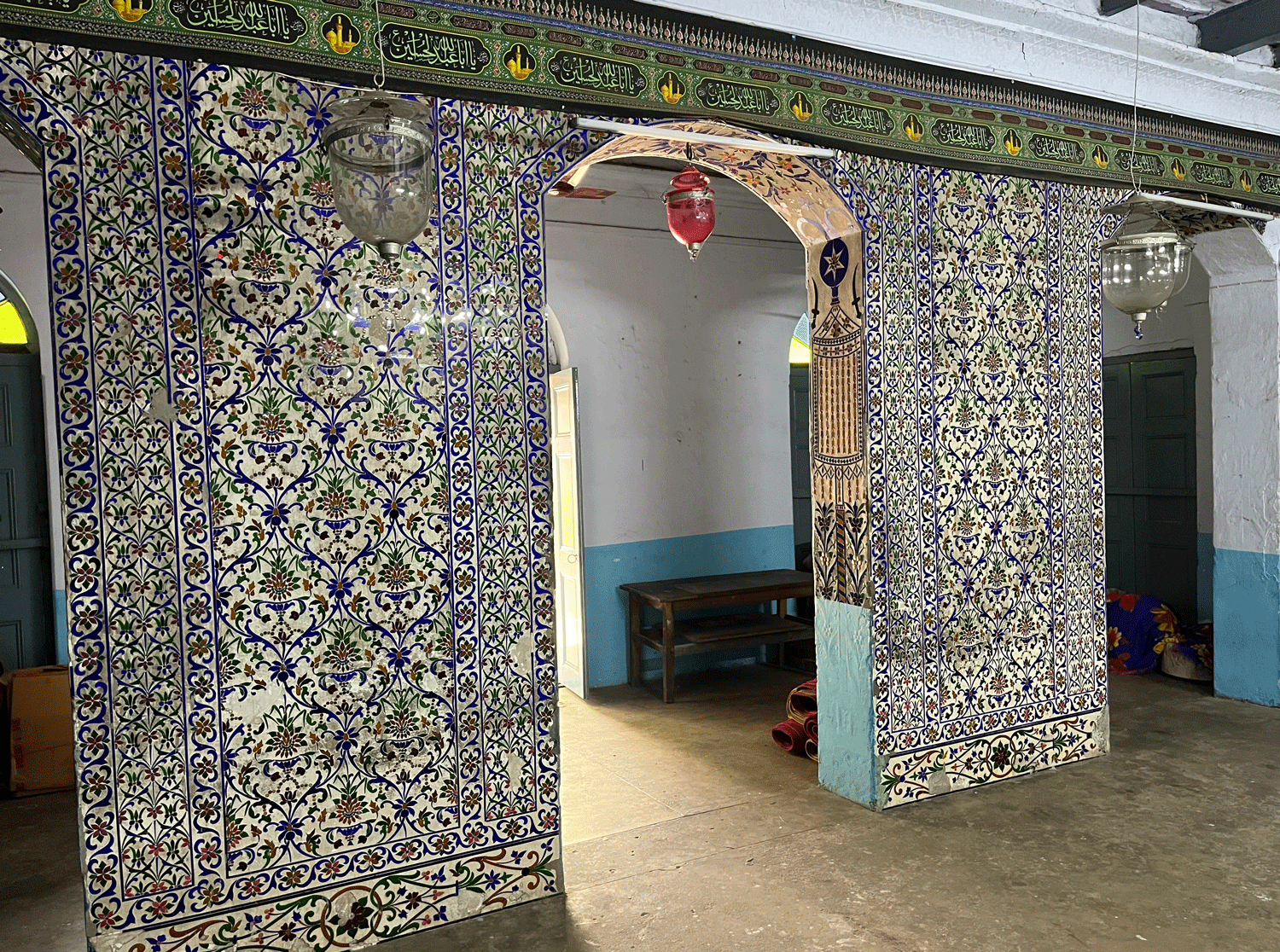 The brilliantly floral walls of Umdah Imambara
The brilliantly floral walls of Umdah ImambaraHow to get here:
Information:
- Its best to do this walk in the morning, between 9 am and noon.
- Visiting the main attractions should take 2 to 3 hours
- The Imambaras are generally open and one is free to visit for as long as one wants
- Free Entry
- No toilet facilities
- No wheelchair access
- Parking is available opposite the clock tower.
- “Engaging Scoundrels : True tales of Lucknow”. By Rosie llwellyn-Jones Published by Oxford.
- “Lucknow: The last phase of an Oriental Culture”. By Abdul Halim Sharar. Published by Oxford
- https://www.kew.org/read-and-watch/gardeners-and-tigers

